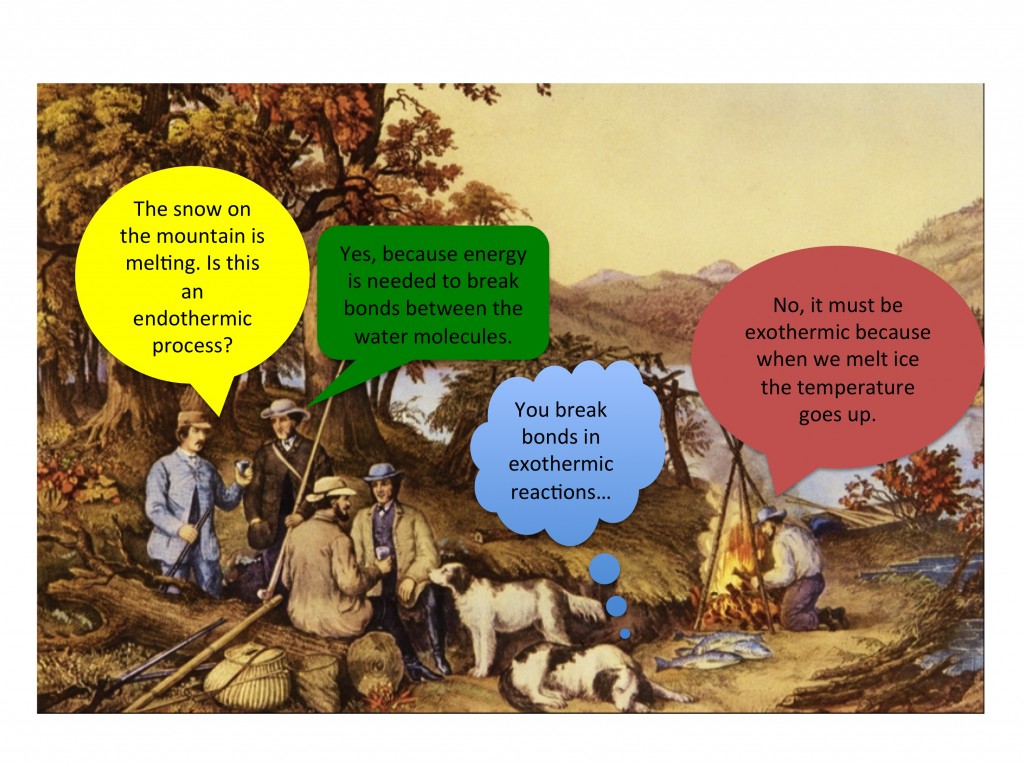Enthalpy (energy changes) teaching resources
Worksheets and lesson ideas to challenge students aged 11 to 16 to think hard about exothermic and endothermic reactions, energy changes/energetics and reaction profiles (GCSE and Key Stage 3)
Enthalpy changes are an incredibly exciting area of practical chemistry that students really enjoy. It can be a challenging topic to teach as students often struggle to understand why exothermic reactions, that record an increase in temperature, have a negative enthalpy change. This can be easily addressed if students understand energy level diagrams. Remember, enthalpy is about about the overall energy change that takes place during a reaction, and therefore students should study enthalpy changes in the context of a chemical reaction, considering both the energy of the system (reactants and products) and the energy of surroundings (everything else).
Where to start?
There are some fantastic teacher demonstrations that can be done to illustrate temperature changes seen in exothermic and endothermic reactions, such as reacting ammonium chloride with barium hydroxide.
Introducing exothermic and endothermic reactions
Key Stage 3 worksheet on exothermic and endothermic reactions. Students consider what the en- and ex- prefixes mean. Students then answer some key diagnostic questions to see whether they understand temperature and energy changes during exothermic and endothermic reactions. (PDF)
Understanding enthalpy changes for exothermic reactions
GCSE worksheet on enthalpy changes for exothermic reactions. The worksheet introduces students to the concept of an enthalpy change in the context of a combustion reaction. Students then use words and an energy level diagram to describe the process of combustion. (PDF)
Energy level diagrams (reaction profiles) including activation energy
GCSE worksheet on energy level (enthalpy) profiles for endothermic and exothermic reactions. Students use their prior knowledge to explain why a fire keeps you warm. The worksheet also shows students how to build energy level diagrams for exothermic and endothermic reactions. Students create their own energy level diagrams for a variety of reactions and finally consider how to draw on the activation energy. (PDF)
Bond energy calculations – mean bond enthalpies
GCSE worksheet on calculating energy changes using bond energies. The key point of this activity is to help students understand that bond breaking is endothermic and bond making is exothermic. Once students understand this concept they can apply it to calculating energy changes for any reactions using mean bond energies. (PDF)
Using q=mcΔT and specific heat capacity
GCSE practical investigation to calculate an enthalpy change for an ice pack. Students imagine they work for a sports company that makes ice packs to treat injuries. They evaluate a reaction and determine its suitability for use in an ice pack. This method requires students to read a thermometer to the nearest 0.5 °C.
Investigation to determine how much energy is in food. Students determine which snack has more energy: Quavers or rice cakes. They calculate temperature changes per gram of food to decide whether they would take rice cakes or Quavers on their mountain adventure.
Enthalpy and dissolving
A Level thinking task on why ionic substances dissolve: entropy and enthalpy. Students think deeply to consider why ionic substances dissolve in water, even if the enthalpy change is endothermic. (PDF)
Going deeper
- Why do chemical reactions happen? Brian Cox explains entropy here.
- To decompose copper carbonate you have to heat it. To react magnesium in air you have to heat it. Sketch energy level diagrams for both reactions and compare and contrast the purpose of heating each reaction.

